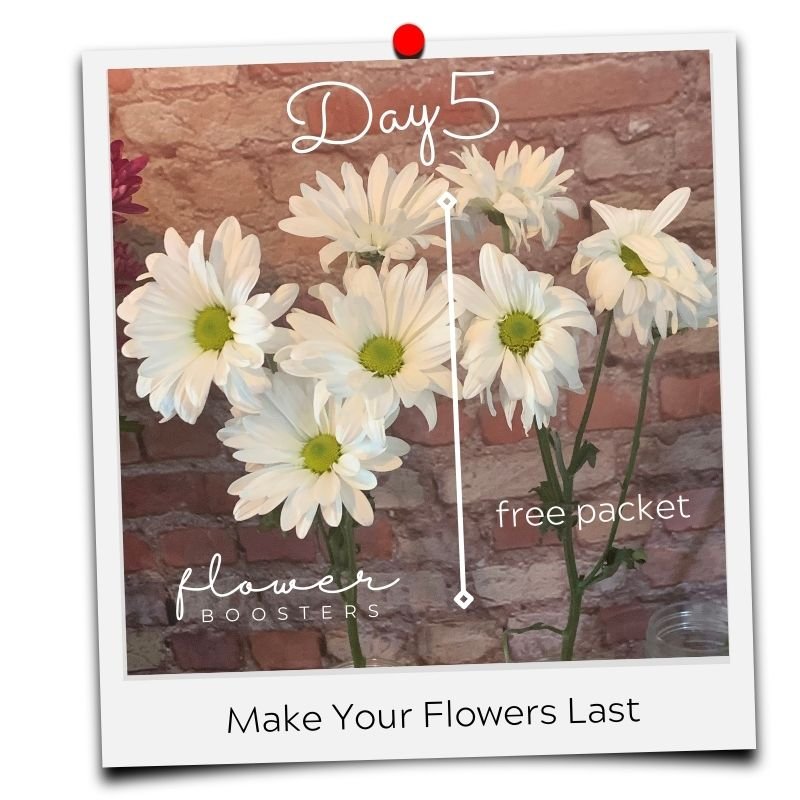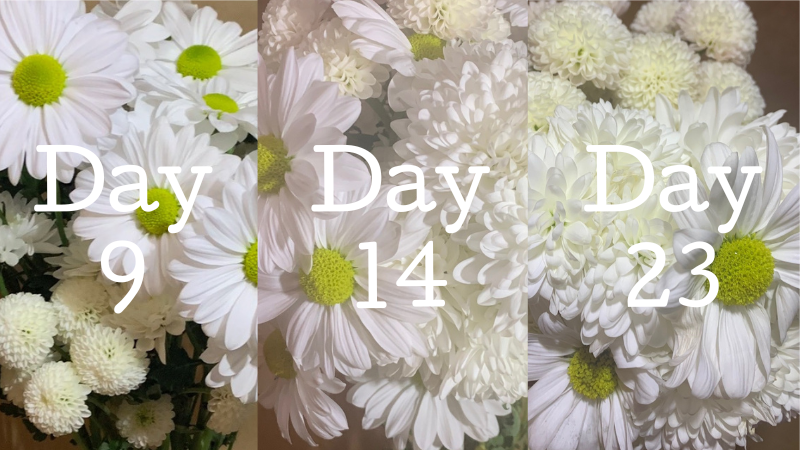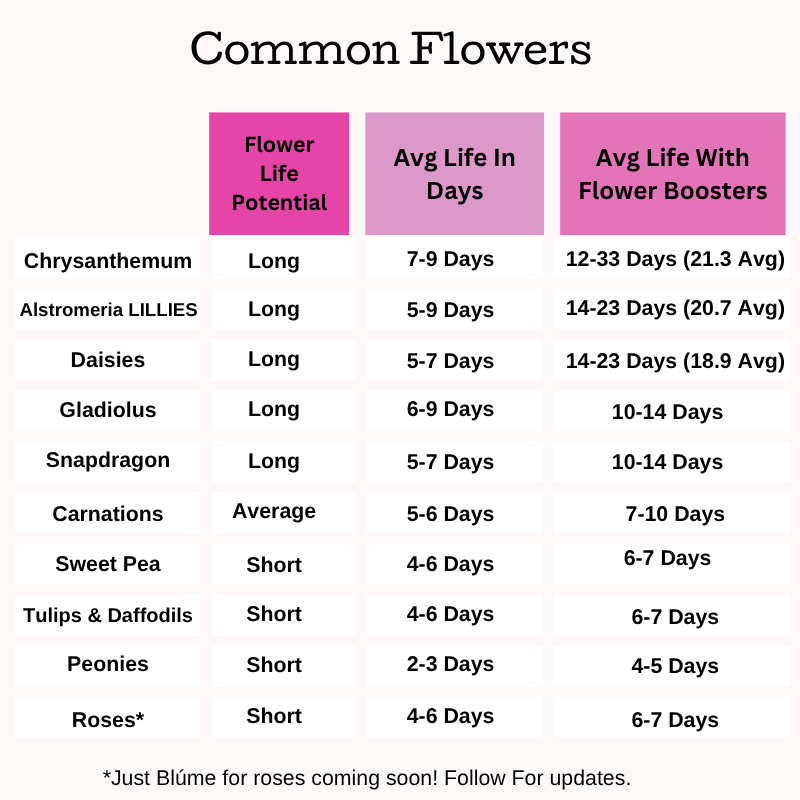Floral Food for Cut Flowers: Who Is It Really Designed to Help?

Walk into any florist shop or grocery store, and you’ll find beautiful blooms paired with a “free” packet of floral food. It feels like a bonus—something that helps your flowers live longer. But what if we told you that most commercial floral food isn’t actually designed with you in mind?
Let’s talk about what floral food is supposed to do, who it’s designed to serve, and why the right formula can mean the difference between a bouquet that lasts a few days… and one that blooms for weeks.
The Hidden Goal of Most Floral Food
Most floral food formulas are developed for retailers, not end consumers. Their goal? To keep flowers looking fresh just long enough to sell.
That means the formula used by retailers is often focused on delaying full bloom or slowing down visible decay—not maximizing longevity. In fact, it’s often in the retailer’s best interest for your flowers to look beautiful in-store, last long enough to avoid complaints, and then quietly fade… just in time for your next bouquet purchase.
Repeat business is the retail goal—not long-lasting flowers.
Why Longevity Isn’t the Priority
Retailers rely on a predictable buying cycle. If your flowers last too long, you buy fewer replacements. That’s why those free packets don’t seem to do much—and leave you questioning whether they work at all.
They do. Just not much.
And the reality is, we don’t really know what they contain. Most companies hide their formulas because they’re not legally obligated to disclose them—so they don’t. We can assume they contain a mix of sugar (which can actually feed bacteria) and citric acid (an industry standard to help with bacteria). But since it’s not helping as much as you’d like, the rest is just a mystery.
It’s not malicious. It’s just business.
But it’s not what you want if you’re hoping to truly enjoy your flowers longer.
Some Flowers Will Always Have Short Lives
It’s worth saying: not all flowers are built to last, even with the best care.
Peonies, for example, are notoriously fleeting. They may bloom gloriously for just a few days—and that’s okay. It’s part of their charm. No floral food in the world can turn a 5-day flower into a 3-week one.
But here’s the real issue…
Most Flowers Are Severely Underperforming
Let’s talk about chrysanthemums—the #1 most common flower in grocery store bouquets. Most people see them fade after 7–10 days. But with proper care and the right floral food, many mums can last 20 days or more. Some varieties? Up to 30 days.
That’s not a fantasy. That’s the real potential of your flowers.
Your bouquet might not be dying from age. It’s dying from neglect—and poor support.
Flower Boosters: Floral Food for Cut Flowers That Live Up to Their Potential
Unlike traditional packets designed to get flowers sold, Flower Boosters is designed to help your flowers thrive.
Our formula isn’t built for shelf life—it’s built for vase life. Pet-safe, non-toxic, and easy to use, it works with just a few simple steps:
Trim the stems
Refresh the water
Add Flower Boosters
That’s it.
This isn’t about mystery chemicals or marketing fluff. It’s about helping your bouquet live up to its utmost potential—because the joy of fresh flowers shouldn’t end after 3–5 days.
Better Floral Food For Cut Flowers Starts Here
Not all floral foods are created equal. Some are designed to sell flowers. Others, like Flower Boosters, are designed to support them—and bring out their best life once they’re in your home.
If you want your flowers to last longer, look brighter, and bloom fully before they fade, give them the care—and the floral food—they deserve.
Buy Direct
Buy From Amazon.com
Suggested Reading:




